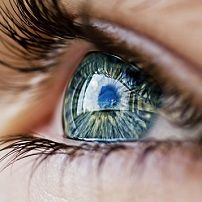Article
Retinal Pigment Epithelium Graft Transplantation Effective in Cases of AMD with Subretinal Hemorrhage
Author(s):
A graft consisting of a monolayer sheet of RPE or a complex graft of RPE and Bruch’s membrane were found equally effective in restoring visual function and central fixation stability.

A team of investigators in China studied 80 patients with neovascular age-related macular degeneration (nAMD) complicated by massive subretinal hemorrhage. In these patients, they retrospectively compared the outcome after choroidal neovascular (CNV) membrane excision alone with outcomes after CNV membrane excision plus retinal pigment epithelium (RPE) transplantation with either of two types of RPE grafts. The investigators also compared the two types of grafts with respect to their effects on visual acuity.
One graft type consisted of a complex of RPE and Bruch’s membrane. The other type consisted of a monolayer sheet of RPE. The investigators found that the increase in visual acuity (VA) score about 2 years after transplantation was comparable for the two types of grafts (P = 0.05).
Mean VA score measured by ETDRS charts in the CNV excision alone group increased by 3 (from 11 to 14). In the complex graft subgroup, VA score increased by 13 (from 22.6 to 35.5). In the monolayer RPE graft group, VA score increased by 11.4 (from 16.6 to 28).
The percentage of improvement in VA score of at least 2 or more lines was 63% in the complex graft subgroup and 58% in the monolayer RPE graft. Both increases were statistically significantly (P = 0.02) higher than the 24% increase in the CNV excision alone group.
The investigators noted central fixation stability in 8 eyes that received a complex graft and 5 eyes that received a monolayer RPE graft.
Complications such as retinal detachment, proliferative vitreal retinopathy, and recurrence of CNV occurred with both graft types.
As a result of these findings, the investigators concluded that autologous RPE transplantation can increase visual acuity score in patients with hemorrhagic nAMD. They further concluded that both types of graft studied were equally effective in restoring visual function and central fixation stability.
Related Coverage
Flying Eye Hospital Brings Invaluable Resources to Patients Worldwide
Drop in Baseline HbA1c Level May Correspond with Reduced Lucentis Efficacy
Wet AMD Treatment Outcomes Look Misleadingly Better in Clinical Trials





